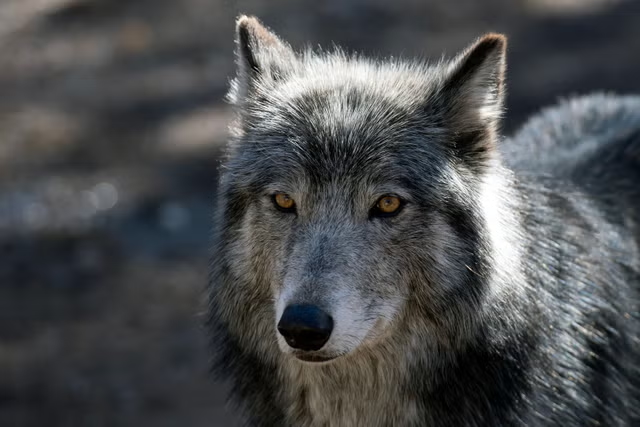The Dark Side of Wildlife Policy: A Deep Dive into Wyoming’s Wolf Controversy
Wyoming’s breathtaking landscapes and untamed wilderness draw millions of tourists yearly, yet beneath the scenic vistas lies a contentious issue of wildlife management that has recently captured national attention. The state’s handling of gray wolves, highlighted by a recent shocking incident, calls into question the balance between human activities and wildlife conservation.
In February, near the small town of Daniel, Wyoming, an appalling act was committed against a gray wolf—a creature emblematic of the American West’s rugged and wild spirit.
The accused, whose actions were deplorably captured and circulated on social media, allegedly ran down the wolf with a snowmobile, bound its mouth, paraded it at a local bar, and then proceeded to kill it.
This incident has not only sparked outrage but has also ignited a broader conversation about Wyoming’s wildlife policies.
Wyoming’s “Predator Zone” and the Controversy of Lax Laws
Wyoming divides its jurisdiction into two distinct zones when it comes to wolf management: the northwestern protected area, which includes national parks where wolves are a major tourist draw, and the vast “predator zone” covering 85% of the state. In this latter area, wolves can be killed without many restrictions. The rationale for such a division stems from an agreement made years ago where federal compensation for livestock lost to wolf predation was traded for more lenient killing permissions in the predator zone. This has long been a subject of legal battles and ethical debates.
The recent incident occurred within this predator zone, but critics argue that labeling it as an isolated case misses the broader implications of such policies. While state officials, including Jim Magagna, executive vice president of the Wyoming Stock Growers Association, argue that the laws are designed to protect livestock from wolf predation without impacting the overall wolf population, this incident has undeniably put the state’s management strategies under the microscope.

Economic and Environmental Balances
Wyoming’s approach to wolf management is often justified by the economic impact that wolves can have on individual ranchers. Although wolves’ impact on livestock is statistically minor, with losses in the predator zone amounting to only 0.002% of cattle herds, the emotional and financial toll on affected ranchers can be significant.
However, environmentalists and animal rights advocates contend that the freedom to kill wolves in most of the state leads to unnecessary cruelty and can destabilize the ecological balance, affecting other wildlife and the health of ecosystems.
The ethical considerations of wildlife management are complex. Saharai Salazar, a Californian who planned to marry in Wyoming, embodies the public’s growing unease, shifting her wedding venue in response to the incident and advocating for legislative changes to protect wildlife. Her story is just one of many reverberating across social media, where a hashtag calling for a boycott of Wyoming tourism has gained traction.
The Need for Reform
The conversation about wolf management in Wyoming is indicative of a larger national debate about how we coexist with native wildlife. As Ed Bangs, a former U.S. Fish and Wildlife Service wolf biologist, notes, while the predator zone policies are unlikely to endanger the overall wolf population, they do raise important questions about our moral responsibilities and the long-term sustainability of our environmental policies.
As the legal and social battles unfold, the incident serves as a stark reminder of the need for continual reassessment of our wildlife policies, ensuring they align not only with ecological and economic needs but also with ethical standards. Wyoming, with its rich natural heritage, stands at a crossroads, challenged to redefine its relationship with the land and its creatures.
The hope is for a balanced approach that respects both the rights of landowners and the sanctity of wildlife—a true test of our commitment to conservation and coexistence.
